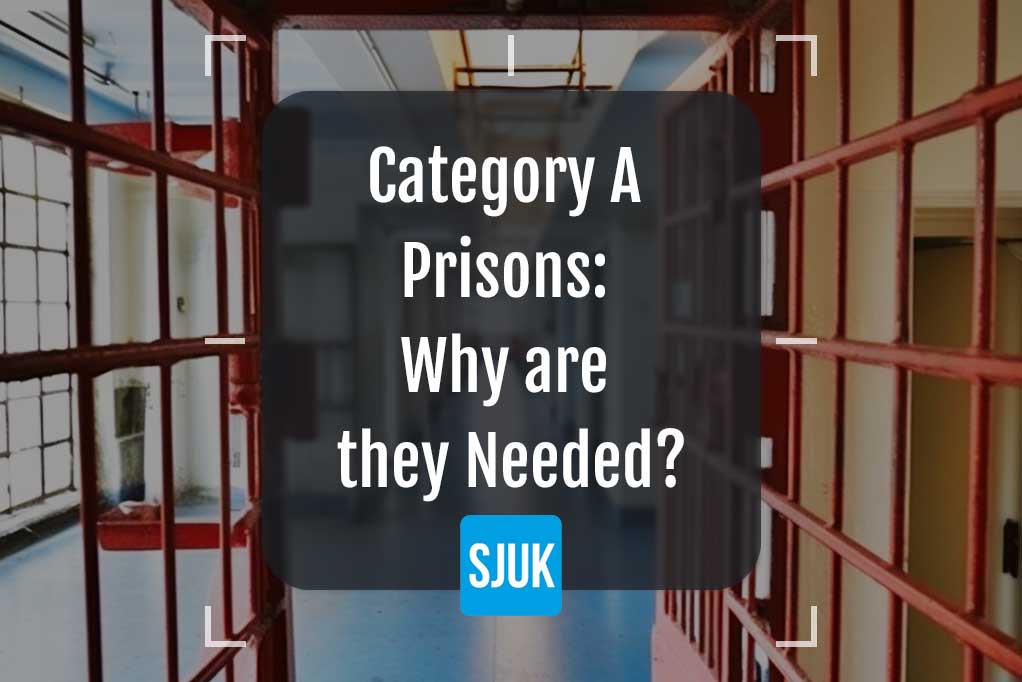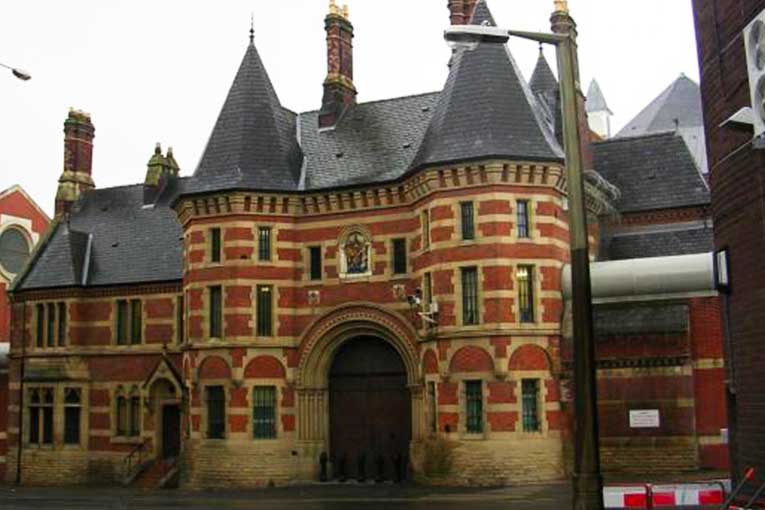
Category A prisons stand as the epitome of high-security facilities.
These institutions play a crucial role in the justice system.
But what exactly are Category A prisons, and what distinguishes them from other categories of prisons?
How do these facilities balance the necessity of secure containment with the rights of the incarcerated?
Table of Contents
ToggleCategory A are the type of prisons with the highest security and most dangerous prisoners.
Category A prisons stand at the apex of the United Kingdom’s prison system, representing the highest echelon of security.
They are the equivalent of maximum security prisons in the USA.
These institutions are specifically designed to incarcerate the most dangerous individuals, those who are considered the most high-risk within the criminal landscape.
The categorization of prisoners as Category A is not arbitrary; it arises from a careful evaluation of their offences and the level of threat they pose to society.
These assessments factor in the gravity of their crimes, the likelihood of escape, and the potential risk they present to public safety and national security.

The role of Category A prisons is more than just containment.
It is about ensuring the most secure and impervious form of incarceration for individuals convicted of heinous crimes.
Prisoners within Category A prisons are often those found guilty of crimes that shock the conscience: acts of terrorism, heinous murders, and organised criminal activities that threaten the very fabric of society.
These prisons serve a twofold purpose: to incarcerate these dangerous criminals securely, preventing them from wreaking havoc beyond the prison walls, and to safeguard the public from the potential harm they might inflict if given even the slightest opportunity.
The stringent security measures enforced in these institutions are meticulously crafted to deter escape attempts and guarantee the highest level of public safety.
Within the confines of Category A prisons, life starkly contrasts with that of other correctional facilities.
Prisoners within these high-security establishments navigate a world characterised by stringent protocols and limitations.
Their living spaces, cells, are noticeably smaller, reflecting the heightened need for security.
The amount of time spent outside these cells is rigorously regulated, limiting freedom of movement significantly.
Moreover, access to educational and vocational programs, which can be pivotal for rehabilitation, might be curtailed due to security concerns.
The stringent nature of these prisons extends to social interactions as well.
Prisoners’ interactions with one another are closely monitored and strictly controlled, ensuring that any potential conflicts or security threats are swiftly identified and neutralised.
In essence, life in a Category A prison is defined by constant vigilance, limited personal space, and restricted opportunities for rehabilitation and social interaction.
Category A prisons differ significantly from Category B, C, and D prisons in several key ways:
House the most dangerous and high-risk offenders, often those convicted of heinous crimes, terrorism, or organised crime.
Prisoners in Category A prisons are considered extremely dangerous and pose a significant risk to public safety.
House prisoners for whom the escape must be made very difficult, but who do not have the ability or resources to make a determined escape attempt.
House prisoners who cannot be trusted in open conditions, but who are unlikely to try to escape.
Often referred to as open prisons, house prisoners who can be reasonably trusted not to try to escape and are given the privilege to work in the community.

Have the highest level of security measures, including stringent access controls, constant surveillance, and limited time spent outside the cell.
Prisoners’ interactions with others are closely monitored and controlled.
Implement measures to prevent escape but are not as strict as Category A prisons.
They may have less intense surveillance and fewer restrictions on prisoner activities.
Focus on preventing escapes but offer more freedom to prisoners.
Prisoners are trusted not to attempt escape but are not ready for open conditions.
Are open prisons, where security measures are relaxed. Prisoners may have jobs outside the prison and participate in community activities.
Escape is highly unlikely, and the focus is on reintegration into society.
Offer limited access to rehabilitation and educational programs due to security concerns.
The focus is primarily on containment and prevention of escape.
Provide more opportunities for rehabilitation, education, and vocational training.
Prisoners have access to various programs designed to help them reintegrate into society upon release.
Emphasise rehabilitation and reintegration. Prisoners often work outside the prison and participate in community activities as part of their rehabilitation process.
Staff receive specialised training to handle high-risk and dangerous prisoners.
Training includes conflict resolution, crisis management, and specific security protocols for dealing with dangerous offenders.
Staff training focuses on managing prisoners and facilitating rehabilitation programs.
While security training is essential, it’s not as intensive as in Category A prisons.
In the United Kingdom, Category A prisons are strategically located, each adhering to stringent guidelines set forth by the government and regularly assessed to maintain the highest standards of security.
Understanding the distinctions between these institutions offers valuable insights into the UK’s prison system.
Belmarsh Prison, situated in the heart of London, stands as one of the UK’s most prominent Category A prisons.
Established in 1991, this facility was designed with a specific focus on handling high-risk individuals, particularly those involved in terrorism-related offences.
Over the years, Belmarsh has gained a reputation for its strict security protocols, making it a crucial component in the UK’s efforts to combat serious criminal activities.
The prison’s origins trace back to the early 1990s when the need for a high-security facility capable of handling terrorists and individuals involved in organised crime became evident.
Belmarsh was established in response to this growing concern, providing a specialised environment equipped to manage the unique challenges posed by high-risk prisoners.
Belmarsh Prison’s stringent security measures encompass state-of-the-art surveillance systems, controlled access points, and highly trained staff members.
These protocols are essential in preventing potential escape attempts or security breaches, ensuring that the individuals housed within its walls are securely detained.
Over the years, Belmarsh has housed several high-profile prisoners, including individuals linked to international terrorism networks.
Its pivotal role in handling such cases has made it a focal point in the UK’s fight against terrorism.
The prison’s history is intertwined with the nation’s efforts to maintain public safety and national security, reflecting the evolving nature of criminal threats faced by modern societies.
Today, Belmarsh Prison continues to operate as a crucial hub in the UK’s high-security prison system.
Its legacy is marked by the successful containment of high-risk offenders and its contribution to the broader mission of upholding justice, ensuring public safety, and combating terrorism and serious criminal activities.
The institution remains a testament to the UK’s commitment to maintaining the highest standards of security within its penal system.
Nestled in the serene landscapes of Yorkshire, Full Sutton Prison stands as a formidable stronghold against some of the UK’s most dangerous criminals.
Established in the early 1980s, Full Sutton was envisioned as a specialised facility capable of managing individuals convicted of serious violent crimes and organised criminal activities.
Its history is rooted in the necessity of creating a secure environment tailored for high-risk prisoners.
The prison’s strategic location in Yorkshire provides a balance between isolation and accessibility, making it an ideal site for housing extremely dangerous individuals.
Full Sutton’s journey began as part of the UK’s response to the escalating challenges posed by organised crime and violent offences.
Its inception marked a significant step in the evolution of the country’s prison system, emphasising the need for specialised facilities capable of handling the most dangerous offenders.
Full Sutton’s security measures are meticulously crafted to manage high-risk prisoners effectively.
The facility employs advanced surveillance technologies, stringent access control, and a highly trained staff dedicated to maintaining order and ensuring the safety of both prisoners and personnel.
These measures are essential in preventing potential escape attempts and maintaining the security of the surrounding communities.
Over the years, Full Sutton has garnered recognition for its role in handling notorious criminals, solidifying its reputation as one of the UK’s leading Category A prisons.
The institution’s history is intertwined with the nation’s ongoing efforts to combat serious criminal activities, reflecting the resolve to uphold justice and safeguard society from individuals capable of causing significant harm.
Today, Full Sutton Prison stands as a testament to the UK’s commitment to public safety.
Its legacy is marked by the successful containment of high-risk offenders, its contribution to reducing crime, and its pivotal role in ensuring the security and well-being of the communities it serves.
The prison continues to evolve, adapting its security protocols to address emerging challenges, thereby reinforcing its position as a vital component of the UK’s criminal justice system.
A new prison at Full Sutton is planned for 2025.
Whitemoor Prison, located in Cambridgeshire, stands as a symbol of the UK’s dedication to curbing serious criminal enterprises.
Opened in the late 1980s, Whitemoor was specifically designed to address the challenges posed by prisoners convicted of offences such as drug trafficking and organised crime.
Its history is intertwined with the evolving nature of criminal activities and the nation’s proactive measures to combat them.
Whitemoor’s strategic location in Cambridgeshire was a deliberate choice, allowing for efficient transportation and ensuring access to necessary resources while maintaining a degree of seclusion.
This balance between accessibility and isolation is crucial in managing high-risk individuals involved in serious criminal enterprises.
Throughout its history, Whitemoor Prison has continuously adapted to the changing landscape of criminal activities.
The facility’s design and security measures have been enhanced over the years, reflecting the insights gained from handling some of the UK’s most dangerous prisoners.
Whitemoor’s staff, composed of highly trained professionals, plays a pivotal role in maintaining order within the facility and ensuring the safety of both prisoners and the surrounding communities.
Over time, Whitemoor Prison has gained recognition for its effectiveness in managing individuals involved in serious criminal enterprises.
The institution’s history reflects the UK’s commitment to addressing the challenges posed by organised crime and drug trafficking.
Whitemoor’s success stories, marked by the rehabilitation of some of its prisoners, echo the transformative potential of the prison system when paired with appropriate support and interventions.

Manchester Prison was established to address the challenges posed by dangerous offenders, particularly those convicted of violent crimes.
This Category A facility has a storied history and its origins can be traced back to the 19th century when Manchester, as an industrial hub, recognized the need for a prison to manage the increasing number of violent criminals in the region.
It is still commonly known by its original name ‘Strangeways’, which it kept up until some of the prison was rebuilt after a riot in 1990.
Over the decades, the prison has evolved, adopting modern security measures and refining its approach to inmate management.
Prisoners within Manchester Prison are carefully categorised and managed to minimise risks.
The prison staff, highly trained and experienced, employs a combination of psychological support, educational programs, and vocational training to address the specific needs of each prisoner.
By tailoring interventions to individual cases, the prison aims to reduce recidivism, ensuring that prisoners reintegrate into society with improved prospects for a law-abiding life upon release.
Manchester Prison’s impact extends beyond its walls.
The facility actively engages with the local community, fostering understanding and support.
Community outreach programs, focused on education and awareness, serve to bridge the gap between the prison and the city it serves.
By involving the community, Manchester Prison contributes to Manchester’s broader efforts to curb crime and promote rehabilitation.
Over the years, Manchester Prison has faced various challenges, adapting to changing crime patterns and social dynamics.
The facility continually innovates, embracing technological advancements and refining its rehabilitative programs.
Through a process of continuous evaluation and improvement, the prison remains at the forefront of the UK’s efforts to manage high-risk offenders effectively.
Frankland Prison was opened in response to the evolving challenges posed by high-profile prisoners involved in terrorism and other grave offences.
Frankland has a rich history dating back to the mid-20th century.
Over the years, the prison has played a pivotal role in the UK’s efforts to securely detain individuals deemed high-risk to society.
Within Frankland’s confines, a diverse range of high-profile prisoners is carefully managed.
The prison employs a multifaceted approach to inmate rehabilitation, emphasising education, vocational training, and psychological support.
The goal is not only to securely detain these individuals but also to provide them with opportunities for personal growth and eventual reintegration into society.
Through tailored intervention programs, Frankland strives to address the unique needs of each prisoner, fostering a sense of responsibility and encouraging positive behavioural changes.
Navigating the complexities of high-profile prisoners and emerging security threats is a continuous challenge for Frankland Prison.
The institution prides itself on its ability to innovate.
By embracing technological advancements and adopting evidence-based practices, Frankland remains at the forefront of the UK’s high-security prison system.
Constant evaluation and adaptation ensure that the prison is prepared to address new challenges effectively, maintaining its reputation as a secure and progressive correctional facility.
Long Lartin, located in Worcestershire, is a Category A prison housing individuals convicted of severe offences, such as murder and organised crime.
Established amidst the serene landscapes of Worcestershire, Long Lartin Prison has a storied history dating back to the mid-20th century.
Over the years, it has earned a reputation for its stringent security measures and its focus on effectively managing high-risk prisoners.
Navigating the challenges inherent to managing high-risk prisoners demands constant innovation.
Long Lartin Prison constantly evaluates its practices, embracing technological advancements and evidence-based approaches.
The facility invests in research to understand the evolving nature of criminal behaviour, enabling it to adapt its rehabilitation and security strategies effectively.
By staying ahead of the curve, Long Lartin ensures that it remains a resilient and progressive institution, capable of addressing new challenges as they arise.
Wakefield Prison holds a unique place in the annals of the UK’s penal system.
Its history dates back to the Victorian era, where it was established in response to the growing need for secure correctional facilities.
Over the years, Wakefield has evolved from a traditional prison to a Category A facility, becoming one of the most notable high-security institutions in the country.
Its strategic location in West Yorkshire has allowed it to cater to a diverse range of prisoners, including some of the most high-profile and dangerous offenders within the UK’s criminal justice system
Throughout its history, Wakefield Prison has been the stage for several notable events and reforms within the UK’s penal system.
In the late 19th century, the prison underwent significant renovations, reflecting the Victorian era’s emphasis on prison reform and humane treatment of prisoners.
Over the decades, Wakefield has been involved in pioneering rehabilitation programs, some of which have set benchmarks for similar institutions across the nation.
Notably, the prison has hosted influential figures in the criminal justice system, leading to critical dialogues and policy changes concerning the management of high-risk offenders.
Over the years, Category A prisons have housed some infamous prisoners.
Charles Bronson, born Michael Gordon Peterson, gained notoriety as one of the most violent and unpredictable prisoners in Britain.
His violent tendencies and numerous incidents within the prison system led to his classification as a Category A inmate.
Bronson’s criminal journey started with armed robbery but escalated into a series of violent offences, both inside and outside prison.
He spent a significant portion of his life behind bars, becoming a symbol of the challenges faced by the prison system in managing highly aggressive individuals.
Ronnie Kray, along with his twin brother Reggie, was a notorious organised crime leader in London during the 1950s and 1960s.
The Kray twins were involved in various criminal activities, including murder, armed robbery, and arson.
Ronnie Kray was eventually convicted of murder and received a life sentence.
His dangerous and influential status within the criminal underworld led to his placement in a Category A prison, reflecting the level of security needed to contain individuals of his calibre.
The names Michael Adebolajo and Michael Adebowale became synonymous with terrorism in the UK.
They were responsible for the brutal murder of British soldier Lee Rigby in 2013 on a London street.
This heinous act, fueled by extremist beliefs, shocked the nation.
Both Adebolajo and Adebowale were categorised as high-risk prisoners and were housed in Category A prisons due to the severe nature of their terrorism-related offences.
Ian Huntley, a former school caretaker, was convicted of the tragic murders of Holly Wells and Jessica Chapman, two ten-year-old girls, in 2002.
The case shocked the nation and led to his sentencing to two life terms in prison.
Huntley’s crime was considered one of the most horrifying in recent UK history, necessitating his placement in a Category A prison, where the highest level of security measures could be implemented.
John Straffen was a convicted child killer who committed one of the most notorious crimes in the UK in the 1950s.
He was responsible for the murder of three-year-old Linda Bowyer in 1951.
Straffen’s case gained significant attention due to the brutality of the crime.
He was initially sentenced to death, which was later commuted to life imprisonment.
Straffen’s dangerous profile and the gravity of his crime led to his classification as a Category A prisoner.
Category A prisons represent a critical aspect of the justice system, ensuring that individuals who pose significant risks to society are securely detained.
While these institutions are shrouded in secrecy and intrigue, their purpose is clear: to protect the public and maintain law and order.
Understanding the nature of Category A prisons sheds light on the complexities of managing high-risk offenders within the confines of the penal system.